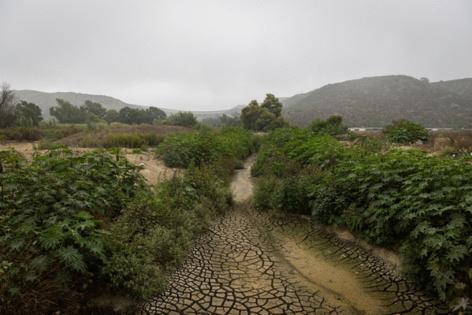EPA reviewing petition to evaluate Tijuana River Valley's eligibility as a superfund site
Published in News & Features
The U.S. Environmental Protection Agency said Friday it is reviewing a petition sent by San Diego County residents and elected officials asking the federal government to evaluate whether the polluted Tijuana River Valley may be eligible for Superfund designation.
County Supervisor Terra Lawson-Remer spearheaded the effort after a majority of her colleagues on the Board of Supervisors voted earlier this month to delay any decision for at least three months.
“We need the EPA to come in here, and tell us once and for all if there is toxic waste in the ground so we have it addressed or take it off the table as an issue for our communities,” Lawson-Remer said in a statement.
The petition included 500 signatures from residents who listed their zip codes, of which about 200 were from South County. Many from the affected communities said they are suffering from respiratory ailments and those living outside of those areas said the sewage crisis has discouraged them from visiting the beaches and local businesses.
EPA spokesperson Julia Giarmoleo said the agency will evaluate whether a preliminary assessment of the Tijuana River is appropriate.
“If EPA proceeds with conducting a PA (preliminary assessment), this initial phase could last up to 12 months,” she said. “A PA includes a comprehensive review of existing information about the area, including potential contamination sources and environmental test results from air, water, soil, and sediment samples. The timeline for this assessment may vary depending on the site’s complexity and the amount of available information.”
The Comprehensive Environmental Response, Compensation and Liability Act, also known as the Superfund program, allows the EPA to identify and, if necessary, remediate hazardous substances. It also makes the parties responsible for polluting the sites to pay for the cleanups. When there is no viable responsible party, the program offers funding through environmental excise taxes on chemicals, according to the agency’s website.
A preliminary assessment is just the first step. The EPA would then conduct a site inspection, which could include groundwater, soil exposure, surface water and air, and score the location from 0 to 100 under its Hazard Ranking System. If a site scores at least 28.5, it is eligible for the National Priorities List, which lists the most serious places for long-term cleanup. It would seek the state’s support before being placed on the National Priorities List. The agency could also defer to the state to handle or another program.
Sewage and toxic chemicals pouring from Mexico into the U.S. have long left people living and working near the border and South Bay shorelines with headaches, nausea, respiratory issues and other symptoms. Earlier this month, the U.S. Centers for Disease Control and Prevention concluded three days of interviewing residents about how the cross-border crisis has affected their health. And last week, the federal Agency for Toxic Substances and Disease Registry launched a monthlong online survey asking people who live or frequent South County beaches similar questions.
Numerous water-quality tests by local universities and federal agencies have previously found several hazardous chemicals in the river, including the banned pesticide DDT and hexavalent chromium, the most toxic form of the metal chromium.
While wastewater infrastructure repairs on both sides of the border are underway, “they cannot undo the impact of decades of relentless toxic pollution,” Lawson-Remer said in the superfund petition letter to the EPA.
Imperial Beach Mayor Paloma Aguirre and other elected officials have repeatedly called for the state and federal governments to declare a state of emergency. She said that effort is not off the table because it would bring the most “immediate and swift intervention,” but because “that has not gotten any traction, we can at least start thinking about designating this a superfund site.”
Chairperson Nora Vargas, whose District 1 includes most of the affected communities, has criticized the Superfund petition as a rushed move “that may slow down real solutions.”
Vargas said in a statement Thursday that she first wanted “community input on decisions that could change the fabric of our community forever.”
“For starters, many communities surrounding these Superfund sites have experienced dramatically declining property values,” she added. “It can also create long periods of uncertainty for local residents and businesses, including potential relocation. These are all valid concerns that we must take into consideration. And I will make sure that our community voices are heard throughout this process!”
County staff are expected to provide the board with additional analysis on the superfund program in the coming months.
_____
©2024 The San Diego Union-Tribune. Visit sandiegouniontribune.com. Distributed by Tribune Content Agency, LLC.







Comments